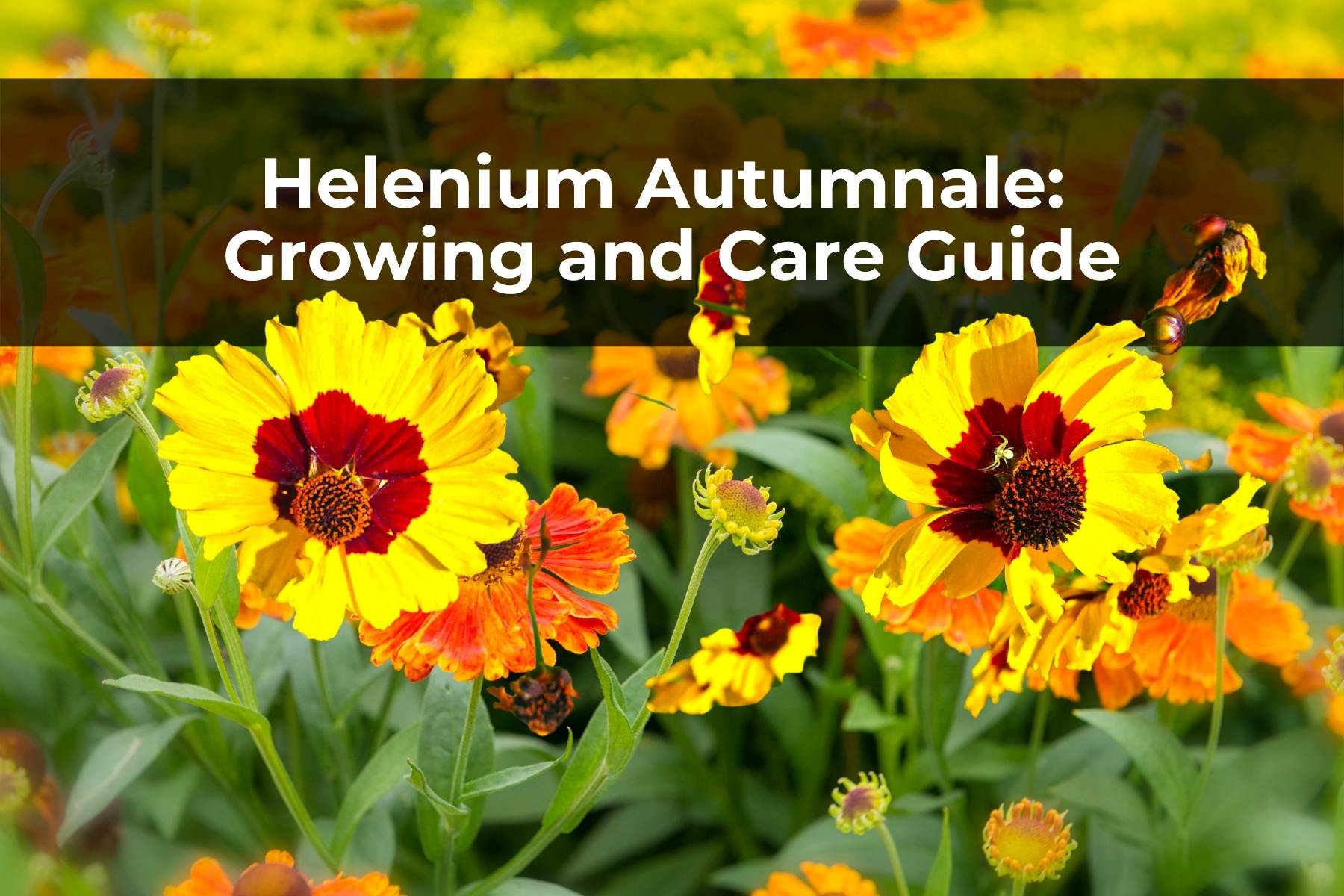Last Updated on June 12, 2023 by Real Men Sow
Helenium (Helenium autumnale), also known as sneezeweed, grows in moist, low-lying meadows and at the edges of damp forests. The genus has been expanded by horticulturists to include all shades of brown, orange, red, and yellow. In late summer and autumn, the blooms of Helenium attract butterflies.
These perennial herbaceous perennials, which form clumps, grow to 2-5 feet high from a crown consisting of fibrous roots and resting shoots. Alternate, medium-green lanceolate to elliptic-oblong leaves up to 6 inches in length have sparsely toothed margins. The stems are often held at the base of the leaves. The stiff, angular, winged, and slightly hairy stems branch close to the top.
How to Propagate Helenium Autumnale
Helenium Autumnale can be grown easily from seeds, but cuttings are also possible. You will need A healthy plant, scissors, a plastic bag, and soilless potting mixture, containers, and rooting hormone (optional). Use scissors to cut just below the node of a soft, green stem. The cutting should be approximately 4 to 6 inches in length.
Take off the lower leaves and dip the stem in water. Then, if you need to, dip it in the rooting hormone and put about 2 inches of the stem into a container with potting mix. Keep it warm, and moist, but not soggy. Plant the cuttings In 3 weeks, transplant the cutting into another pot or the ground.
Growing Helenium Autumnale from Seed
To get a large number of helenium-rich plants, choose seedlings. Sprinkle the seeds on moist soil but don’t cover them as they need light to germinate. The plants will germinate within two weeks at room temperature.
General Care Guide for Helenium Autumnale
Light
Helenium Autumnale flowers can become leggy if they don’t get at least six hours of sunlight each day. However, they will tolerate some shade in the afternoon, especially if it is dry.
Soil
Helenium Autumnale plants prefer their soil to be on the acidic side, with a pH range of 5.5-7.0. Heleniums should be placed where they can enjoy moisture, but not in a wet area. You might consider a rain garden location where moisture naturally collects such as a low-lying spot or under a downspout. Although well-draining soil is the best, heleniums can tolerate clay.
Watering
Helenium Autumnale flowers are not drought-tolerant. They prefer moderate to high moisture. A three-inch layer of organic mulch will help keep water in the soil and keep the pH at an acidic level.
Temperature and Humidity
Although Helenium Autumnale plants can tolerate high humidity and hot summers, it is important to space them properly in order to avoid fungal diseases such as mildew or rust.
Fertilizer
Helenium Autumnale doesn’t need to be fed heavily. In fertile soils, one application of a balanced fertilizer in spring is sufficient. Over-fertilizer can cause lanky growth. However, pinching back heleniums in spring encourages stronger, more robust plants and more branching.
Pruning
To encourage future blooming, deadhead used flowers. After the flowers have bloomed, trim the stalks to the leaves. Divide plants every three to five years to maintain vigorous growth.
Overwintering
Spread a layer of mulch or hay (about 6 inches) over the helenium bed after the first frost. Remove the insulation layer in the spring after the frost danger has passed.

